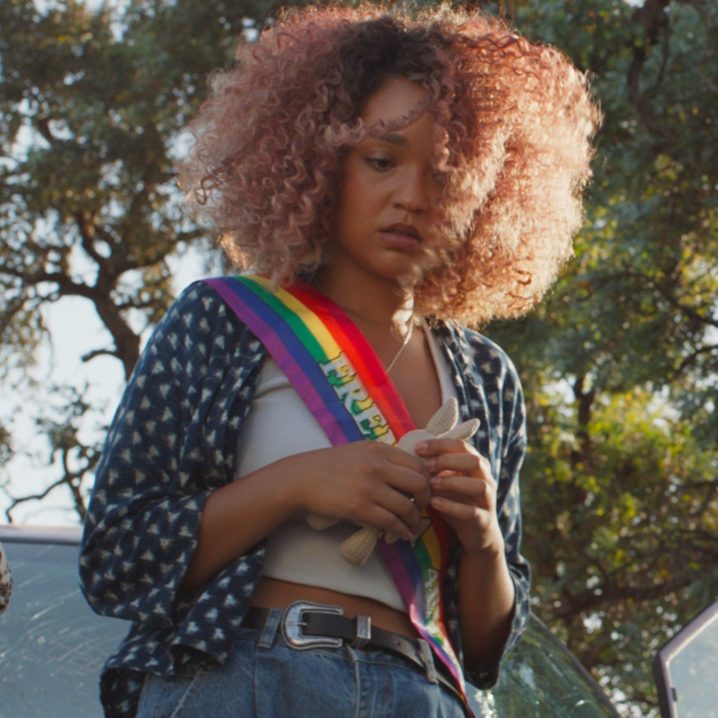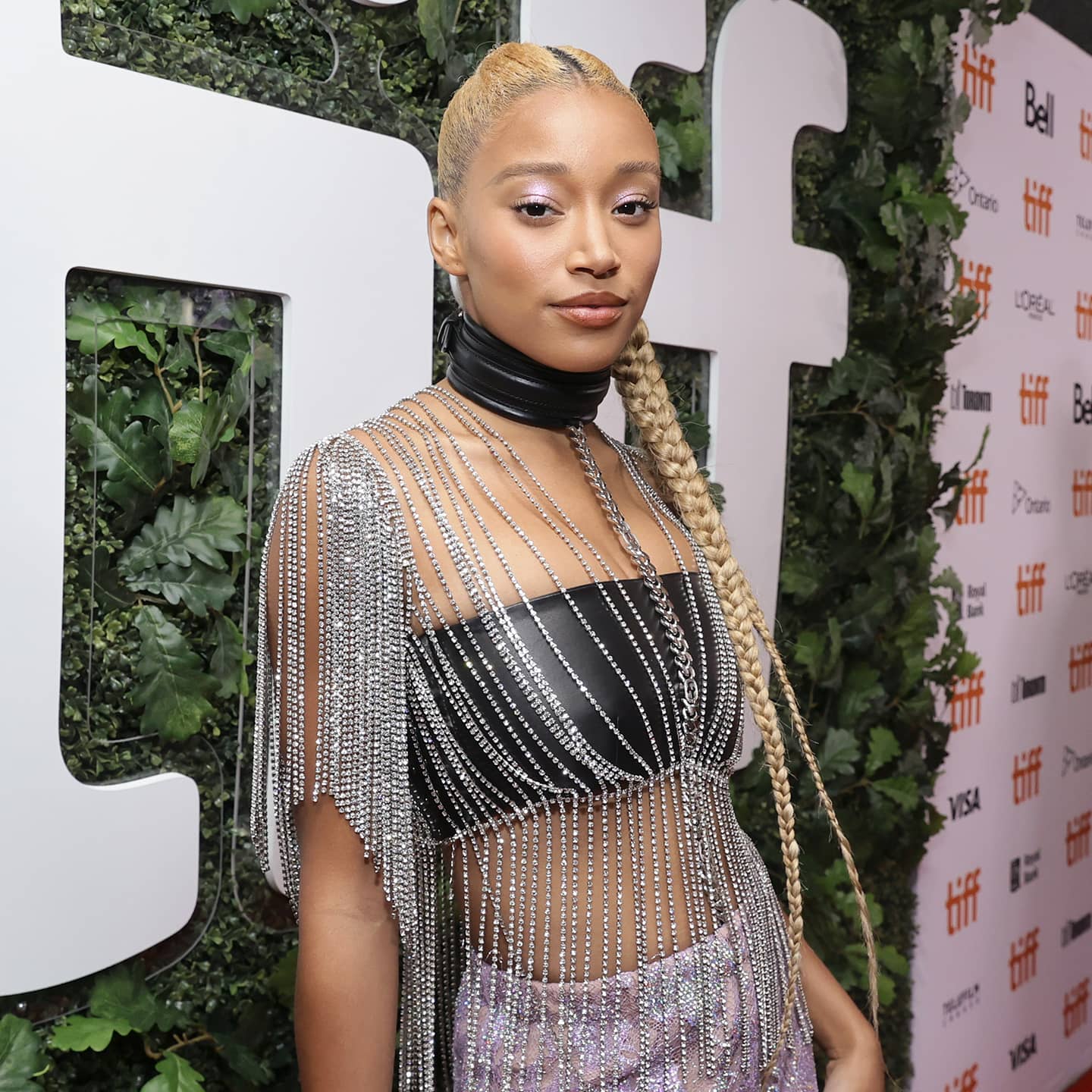
- POPSUGAR Australia
- Celebrity
- “Walk Away From the Trauma”: Sissy Filmmakers on What They Hope People Take From the Film
“Walk Away From the Trauma”: Sissy Filmmakers on What They Hope People Take From the Film

Warning: This article contains spoilers for the film Sissy.
Earlier this year, the slick Aussie horror-comedy Sissy wowed audiences, impressed critics, and was quickly picked up by streaming platform Shudder. Months later, it’s now in Aussie cinemas and POPSUGAR Australia got a chance to chat to filmmakers Hannah Barlow and Kane Senes who wrote and directed the film together
The film follows Cecilia (Aisha Dee), an influencer (or “mental health advocate”) who runs into her tween-age bestie Emma (Barlow) at the chemist one day. The two had pledged to grow old together until Alex (Emily de Margheriti) arrived on the scene.
After a brief, awkward interaction, the pair soon reconnect and Emma invites Cecilia (and don’t call her Sissy) to join her on her upcoming hens weekend. The catch? Alex is there and seemingly committed to not letting Cecilia get over past their past. The result? Things get bloody.
While the film is a scathing commentary on social media wellness influencers, a la cancer conwoman Belle Gibson, there’s another character in the mix who’s perhaps just as villainous: bride-to-be Emma.
Over the course of the film, we see that Emma is absolutely petrified of confrontation — she doesn’t stand up for Cecilia when she’s being bullied at school, but she also doesn’t tell Cecilia that she doesn’t want to be friends with her either. She doesn’t warn Alex that she invited Cecilia to her house, but she also doesn’t give Cecilia a heads up that they’re going to Alex’s house, knowing how traumatic and triggering it will be for both of them. Is Emma’s terminally passive nature the real villain here?
“100%, yes,” Barlow said. “Yeah, definitely. Emma’s the villain of the movie. Her lack of a spine, her duplicitous-ness, that’s quite passive and subtle, is the reason everybody dies”.
“I feel like Emma and Cecilia are both sides of me,” she continued, “parts of myself that I still judge and I’m still healing. And Emma definitely represents the fickle friend, someone who’s partially loyal who doesn’t follow through and doesn’t consider other people’s feelings —”
“But who is driven by what people think about her,” Senes added.
“Exactly,” Barlow agreed. “Who’s equally validated by other people’s opinions as Cecilia is.”
We’ve certainly all been there — running into a friend from school, or a former job, where you have a great chat that ends with “we should catch up sometime!” a promise that, although you mean it in the moment, you know deep down that you never plan on actually fulfilling.
While the film is a bloody, sometimes gory look at the worst possible scenario of actually following through on those awkward, half-hearted promises, Senes said that it can be looked at as a metaphor as well.
“If you look at the violence as almost more of a metaphor for the pain of actually shedding your past, shedding those parts of you that do that, where you can’t just be 100% yourself,” he began, “Like if you truly just stepped into your power all the way, you wouldn’t do something that you didn’t really want to! And sometimes that’s an unpleasant thing.”
Sissy is a film that features the complicated, awkward, and yes, often toxic dynamics of childhood friendships. Watching it, I was taken back to my own tween-age years, when my sleepovers with friends included regular viewings of late ’90s slashers like Scream and I Know What You Did Last Summer. I was curious as to what Barlow and Senes wanted the tweens of today to take from Sissy as they watched it at their own sleepovers.
“That’s a really cool question,” Senes said. “It’s tough. I don’t know, I feel like at that time in the nineties when teens would’ve watched Scream, it would’ve both been kind of satirising their friendship group, but also lionising them… seeing yourself on screen and feel like, ‘Oh, that’s us. I’ve got a friend who represents that trope, that stereotype, and I’ve got a friend who represents that stereotype, and which one of the group is me?’.
“I would be chuffed if it was just a similar response, and kids just kind of, at one point, hated this group and rooted for them to die — because that’s what you do when you watch a slasher film — but at the same time felt, I don’t know, some pride in seeing their generation on screen.”
For Barlow, she hoped that they would keep Sissy in mind if they ever found themselves bumping into a friend that mentally transported them back to a more toxic headspace.
“Maybe, as they’re growing up and they bump into that friend, they bump into an Emma and they’re like, ‘Maybe I should explore this!’, they choose not to re-traumatise themselves,” she said.
“That’s the mature answer,” Senes agreed. “Yeah, that’s kind of like what you hope in a sense, that kids can take away from it or that teens can learn from it.”
“Like, identifying the friends that are actually serving you and not, and then honouring yourself before the herd,” Barlow said. “That’s what I’m hoping the tweens do, that they go, ‘Oh, actually, actually that friend is not good for me, and for some reason I feel weird around that person. I’m gonna start listening to my instincts.'”
“So, what did you learn from I Know What You Did Last Summer?” Senes asked Barlow. “What did that teach you? Outside of ‘never spin around and say ‘What are you waiting for, huh?””
“I just think walk away from the trauma,” Barlow replied. “Just move on! What’s really funny about all these films is that these people, these protagonists and the surrounding friendship group keep re-engaging with the original trauma when they could just move on.”
Sissy is in cinemas now.


